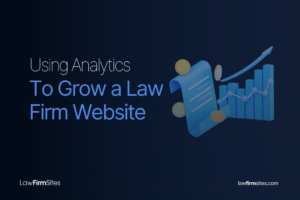Winning Featured Snippets for Law Firms

Featured snippets dominate the very top of Google’s results and can place your firm’s guidance above powerful competitors. For legal marketers, that placement boosts visibility, trust, and qualified traffic from people seeking clear answers. This guide explains how featured snippets work, why “People Also Ask” matters, and how to earn those result types with well-structured, people-first content. You will also find practical steps you can apply across your practice area pages and blogs today.
Why do Google Featured Snippets Matter for Law Firms?
Featured snippets present a concise answer from your page directly in search results, often above the traditional first result. Google describes these as special boxes that show a reversed result format and can also appear inside “People Also Ask” groups, which means a single page can surface in multiple high-visibility spots. When your content wins that box, potential clients see your explanation first, which signals authority and speeds their path to action. Google’s own documentation emphasizes that helpful, reliable, people-first content is what its systems are designed to surface, making law firm pages that answer questions clearly well-positioned to compete.
Featured snippets can improve discoverability even when your page is not the top organic result. Research from Ahrefs found that millions of queries now show featured snippets, and that these elements attract a meaningful share of clicks across those results. While click-through behavior varies by query, the presence of a snippet changes how users scan and choose results, which gives concise legal answers an advantage. Legal topics that map to definitions, steps, and quick explanations are especially likely to trigger these boxes in search.
Beyond traffic, snippets influence credibility. When a prospective client sees your clear definition of “breach of fiduciary duty” or a step-by-step overview of “what to do after a trustee resignation,” that clarity positions your firm as a reliable educator. Google’s guidance further underscores that the systems now fold its helpful-content signals into core ranking processes, rewarding content that satisfies people’s needs. Aligning legal pages with that standard improves your baseline quality and your chance to surface in featured elements.
Google’s “People Also Ask” boxes and why they are important for law firms
“People Also Ask” boxes expand with related questions and short answers that help searchers explore a topic. For legal queries, they guide users who are unsure where to start and reveal the next questions a client will likely ask after the first click. By covering those follow-up questions on your page, you match the search journey and earn more visibility for each query cluster. Large datasets and industry research show that PAA elements are widespread, and even a small share of interactions can drive incremental brand impressions when your answer appears repeatedly.
PAA visibility compounds reach because the same answer can show for many variations. A thorough “probate timeline in California” guide may also appear for “how long does probate take” or “what if the executor delays distribution,” and each expansion shows your brand again. Google’s featured snippet documentation also notes that snippets can appear inside related question groups, which makes PAA coverage a pathway to snippet wins. Treat PAA questions as signposts for structuring content, headings, and quick definitions within your articles.
For firms, this means building content that addresses real user intent rather than surface-level keywords. Use the questions to shape sections like “Who can file a will contest,” “What counts as financial elder abuse,” or “How to remove a trustee for breach of duty,” then provide crisp, non-jargon answers. This approach helps people learn faster while signaling to Google that your page resolves common tasks. Over time, those signals support both featured snippet eligibility and stronger organic rankings under broad and long-tail queries.
How to launch your law firm website to the top of “featured snippet” and “people also ask” lists?
- Map question-driven search intent before you write
Start with a seed topic like “trust administration California” and pull related questions from PAA datasets and your own intake notes. Group the questions into themes such as definitions, steps, deadlines, forms, fees, and risks, then build a single, comprehensive page that answers them in plain language. Google’s people-first guidance stresses satisfying the visitor’s purpose, so plan your outline around the exact questions clients ask
- Lead with a concise answer paragraph for each question
Featured snippets often extract two to three sentences that directly satisfy the query, followed by supporting details. Place a short, exact answer immediately under an H2 or H3, like “What is a will contest” or “How does trustee removal work,” then elaborate. This structure increases the chance that Google can identify and display your answer block in the results.
- Use descriptive headings that mirror searcher language
Write headings that match how people type questions, including “who,” “what,” “when,” and “how” phrases. Avoid internal shorthand and legal jargon in section titles if your audience does not use those terms. Clear headings make it easier for Google to map your sections to featured answers and PAA prompts. This aligns with Google’s best practices for helpful, scannable pages.
- Structure answers with clean HTML and simple formatting
Snippets often pull lists, steps, and definitions, so format processes like “How to open probate” or “How to respond to an accounting dispute” as brief, ordered steps. Keep sentences short and avoid stuffing multiple ideas into one line. Mark up sections with standard headings and paragraphs so the extraction is straightforward.
- Add a single-paragraph definition and a short list for procedural topics
For topics such as “financial elder abuse,” include a tight definition followed by a short list of common indicators like unauthorized transfers, sudden changes to estate documents, or isolation tactics. For process queries, outline the steps in order with one sentence each. Google frequently surfaces list-style snippets when users search for “how to” tasks.
- Build comprehensive pages that answer clusters of related questions
Instead of publishing dozens of thin posts, create robust practice hub pages that include definitions, timelines, forms, costs, jurisdiction-specific rules, and risks. Interlink to deeper guides on subtopics such as “accounting disputes,” “trust interpretation controversies,” and “conservatorships,” and keep all content accurate. Google’s guidance repeatedly points to depth and helpfulness as durable ranking inputs
- Use schema where it supports eligible rich results, but know its limits
Structured data helps Google understand entities and can unlock rich results like FAQs, reviews, and organization details, yet there is no specific markup that guarantees a featured snippet. Implement supported schema types for your pages, and ensure your Organization details are accurate, but focus most on content quality. Google’s documentation clarifies which result types are enabled by schema and that snippets themselves are algorithmic.
- Write meta descriptions that reinforce the answer
Google sometimes draws on your meta description for snippets, so craft a short summary that matches searcher intent. Summaries that echo the concise answer in your on-page paragraph can increase relevance and improve the result appeal. Treat descriptions as user-facing copy that confirms your page is the right resource.
- Refresh legal facts and state-specific guidance
Snippets reward accuracy and clarity, and laws change. Review statutes, deadlines, thresholds, and filing procedures at regular intervals, update your content, and add revision dates where appropriate. Pages that remain accurate are more likely to retain featured visibility over time under Google’s helpful-content principles.
- Cover adjacent “People Also Ask” questions within the same page
Scan the PAA box for your primary query and include short sections that address those questions, such as “Do I need court approval for a trust accounting?” or “What happens if an executor delays distribution.” As your page earns more visibility, it can appear for a wider set of related questions. This is a proven way to widen your footprint for mid-funnel searchers
- Prioritize E-E-A-T signals across the author and the site
Make it clear who wrote or reviewed the piece, include relevant credentials, and link to attorney bio pages and bar memberships. Provide citations to statutes or official judiciary resources where helpful, and keep your About and Contact details easy to find. Google’s systems aim to surface trustworthy, people-first resources, and these site-wide signals support that goal.
- Measure impact beyond rank and iterate with real queries
Track impressions and clicks for queries that trigger featured snippets or PAA appearances, then update your answers based on what people actually search next. Watch for shifts in search systems that fold helpful-content signals into core ranking and adapt your pages to stay the most useful result. Testing concise answer blocks, headings, and examples can move the needle more than chasing minor keyword variations
Earn Big Wins from Small Snippets
Winning featured snippets is less about tricks and more about building the clearest legal answers on the web. Use question-driven headings, concise answer paragraphs, and accurate, jurisdiction-specific details to align with how Google surfaces people-first content. Keep your pages fresh, readable, and easy to scan, and expand coverage to match the follow-up questions clients ask.
Law Firm Sites can help you pressure-test outlines and identify question clusters to strengthen your marketing campaigns to boost your law firm’s SEO rankings.
Did you like this post? Here are some others you might enjoy:

For most law firms, growth depends on being visible at the exact moment a potential client searches for help. Pay‑per‑click…

Strong legal marketing rewards depth. When potential clients face high-stakes decisions, they search for thorough, trustworthy guidance that clearly explains…

Data is the most reliable guide for growing a law firm website because it shows what clients actually search, where…

